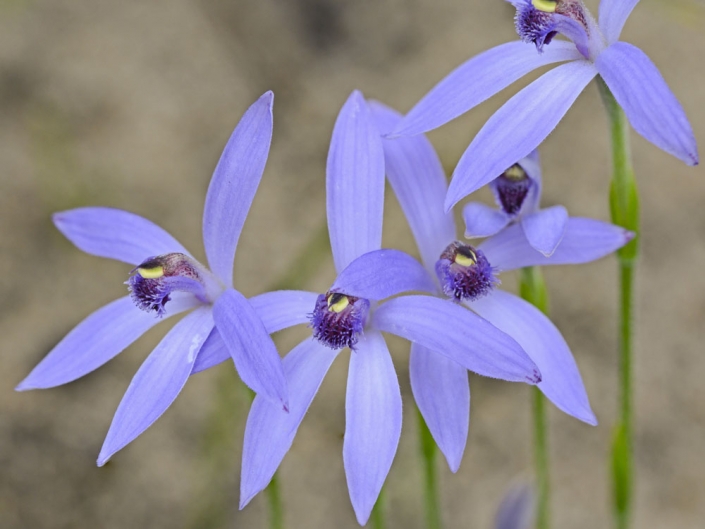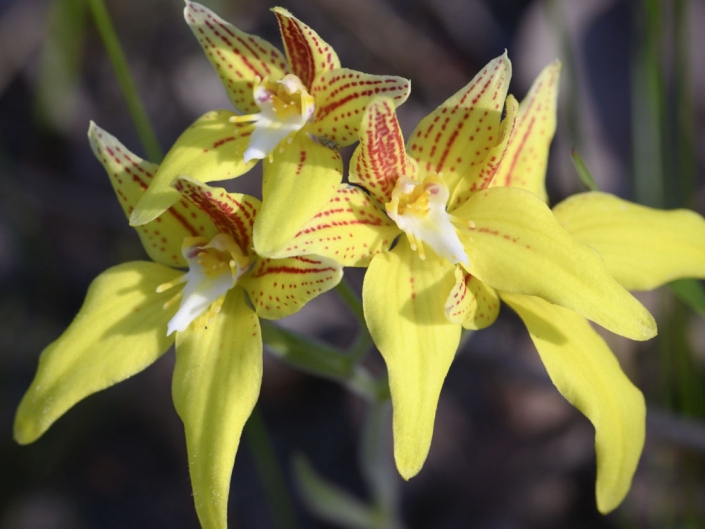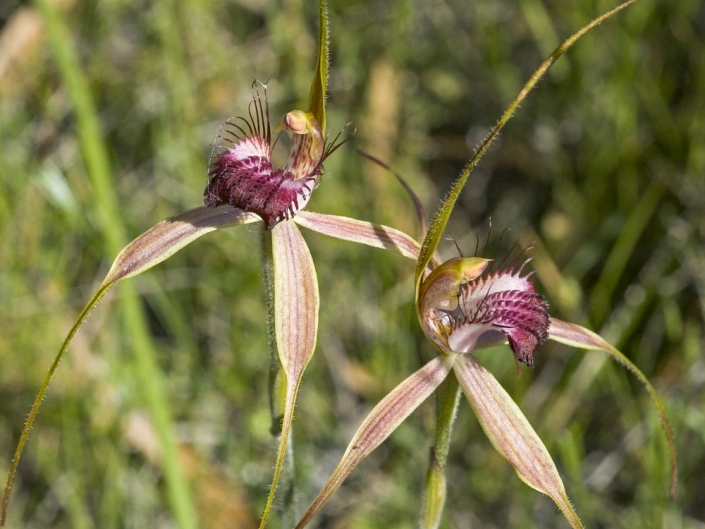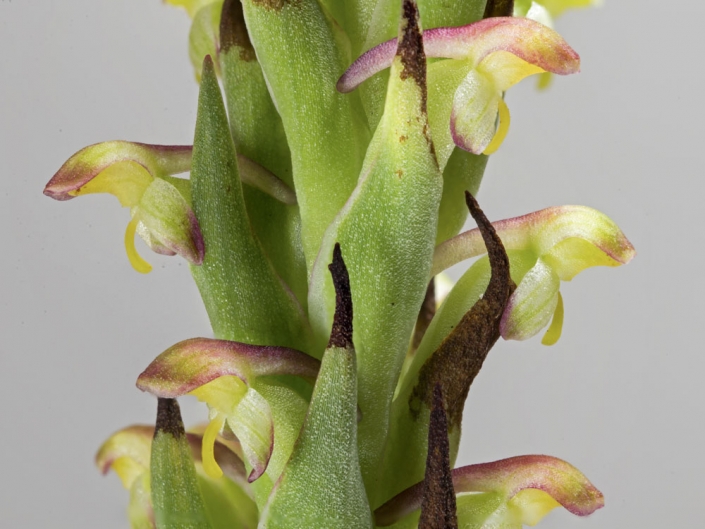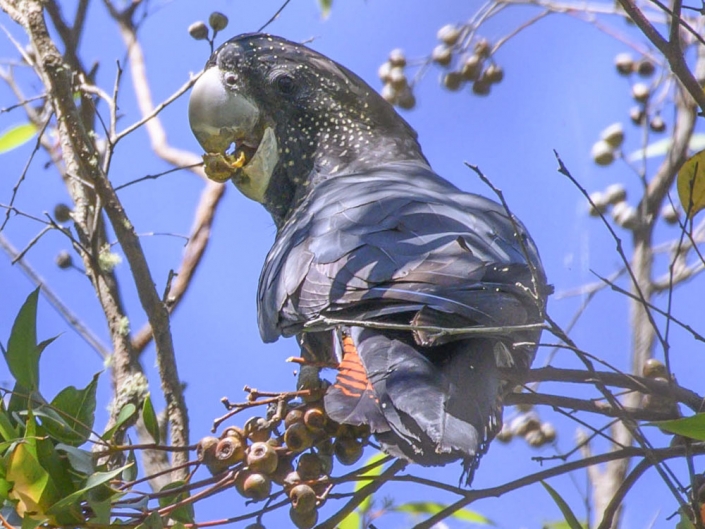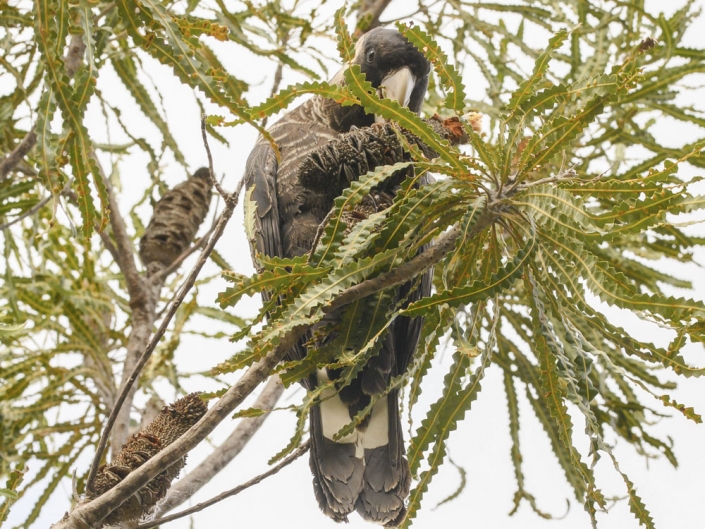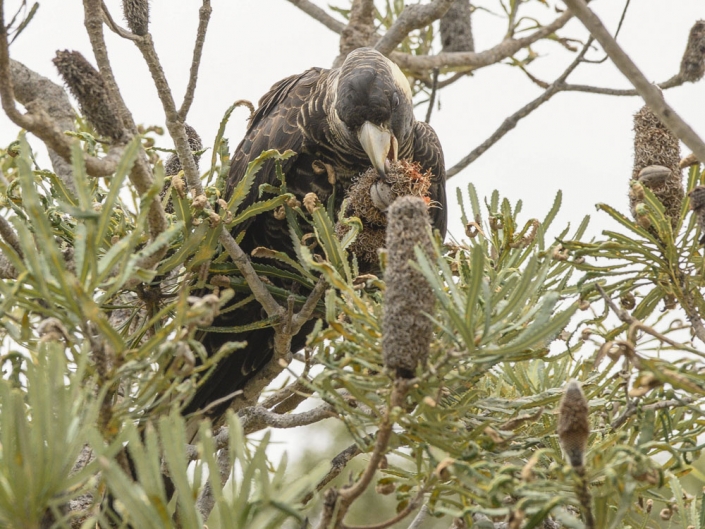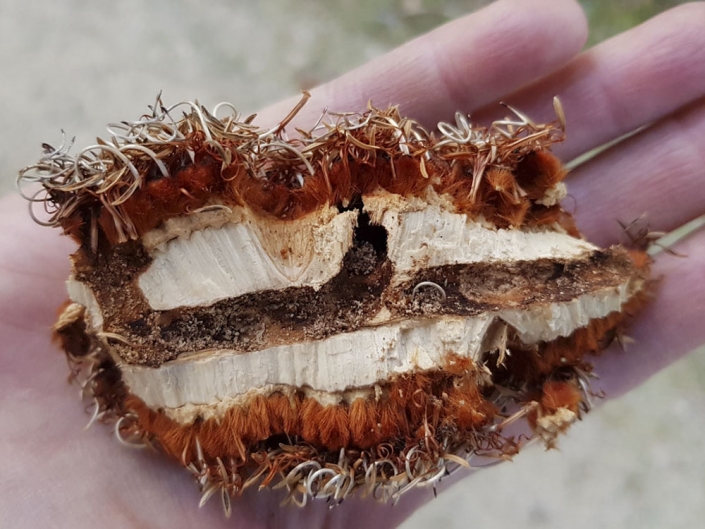4. Jarrah Forest with Orchids
This area has impressively large jarrahs transitioning to banksia-dominated woodland over a low understorey of herbs, sedges, irises, etc.
Common Wildflowers (see Points of Interest 2, 3 and 5)
Focus Topic 9. Common Orchids on the Jarrah Trail
Hare orchids (Leporella fimbria) are the first to flower in autumn and early winter but are very inconspicuous. Banded Greenhoods (Pterostylis orbiculata) and Bluebeards (Pheladenia deformis) flower in winter. Red Beak (Pyrorchis nigricans) leaves are very common, but flowers are only seen after fire (POI 9). Pansy Orchids (Diuris magnifica) and Cowslip Orchids (Caladenia flava) are most common on this trail in early spring, but you can also see Blue Sun Orchids (Thelymitra macrophylla) in mid spring. The last two orchids have very small green flowers in dense spikes and flower in late spring. These are the Mignonette Orchid (Microtis media) and the South African Orchid (Disa bracteata), which is a weed. These orchids are are illustrated below along with videos explaining complexities of orchid pollination.
In total, 34 species or subspecies of orchids have been recorded in Warwick Bushland and 30 of these are still present. These include 7 common and widespread, 10 common is some areas, 2 only seen after fire and 11 locally rare species (see full list).









